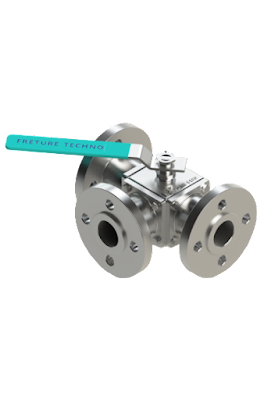In the intricate world of industrial valves, where safety and functionality are paramount, the topic of fire safety holds particular significance. While ball valves are widely known for their reliability and versatility, the fire safety aspect becomes a nuanced challenge when it comes to 3-way ball valves. In this article, we unravel the reasons behind why 3-way ball valves often encounter hurdles in achieving fire safety standards.
 |
| 3 Way Ball Valves |
1. Complex Internal Structure:
The inherent design of 3-way ball valves involves a more complex internal structure compared to their 2-way counterparts. This complexity can pose challenges when it comes to ensuring a tight and reliable seal under extreme conditions, such as those encountered in fire situations. Achieving the necessary fire-safe sealing within the intricate pathways of a 3-way ball valve can be a demanding engineering feat.
2. Increased Potential for Leakage:
The configuration of 3-way ball valves inherently introduces additional pathways and potential leak points. In a fire scenario, where the system is subjected to intense heat and pressure, the risk of leakage becomes more pronounced. Maintaining a reliable seal across multiple ports and diverging flow paths becomes a formidable task, making it challenging to meet stringent fire safety standards.
3. Stringent Fire Safety Testing Requirements:
Fire-safe certifications involve rigorous testing procedures to ensure the valve's ability to withstand high-temperature environments and prevent internal leakage. 3-way ball valves, due to their intricate design, may struggle to meet these stringent testing requirements. Achieving and maintaining a tight seal across multiple ports during extreme conditions poses a significant challenge in obtaining fire safety certifications.
4. Limited Industry Standards for 3-Way Fire-Safe Valves:
While industry standards and certifications exist for fire-safe ball valves, these are primarily tailored for the more common 2-way configurations. The lack of specific standards for 3-way ball valves further complicates the task of ensuring their fire safety compliance. Manufacturers face the uphill challenge of adapting existing standards or developing new ones to address the unique complexities of 3-way configurations.
Conclusion: Addressing the Challenges and Looking Ahead
In conclusion, the intricate internal structure, increased potential for leakage, stringent testing requirements, and limited industry standards collectively contribute to the challenges that 3-way ball valves face in achieving fire safety. As technology advances and industry demands evolve, it remains to be seen whether innovative solutions or revised standards will pave the way for fire-safe 3-way ball valves. Manufacturers and engineers are continually exploring avenues to address these challenges and enhance the fire safety aspects of 3-way ball valve designs, ensuring that safety remains at the forefront of industrial operations.


No comments:
Post a Comment